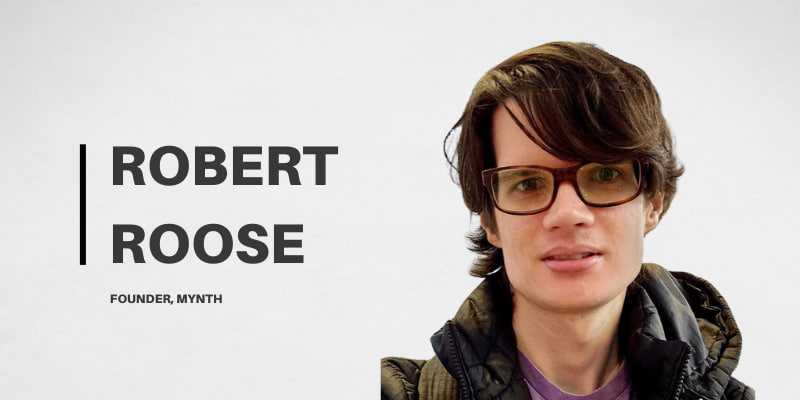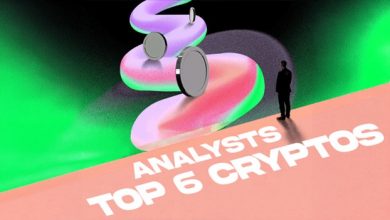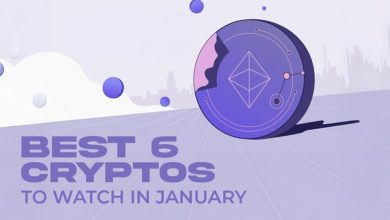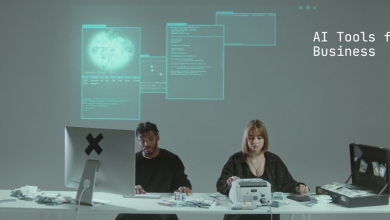Bridging Blockchains and Simplifying Finance: Mynth Founder Robert Roose on the Future of Crypto

Today, we’re going in-depth on blockchain innovation with Robert Roose, an entrepreneur who’s on a mission to fix today’s broken monetary system.
With years of data science and crypto startup experience, Robert is looking to simplify financial systems and make blockchain more inclusive and accessible.
In this interview, Robert shares his journey with TechBullion, the idea behind Mynth, and his vision for a unified financial future.
Can you tell us a bit about your background and what inspired you to work on solving the challenges of our fragmented monetary system?
“I’m Robert, and I’ve spent many years working with startups and small-scale companies, particularly in data science and crypto. I’ve always been driven by entrepreneurial ventures and enjoy working on monumental tasks that push industries forward.
My inspiration to address the fragmentation of monetary systems stems from my belief in crypto’s potential to create equal financial opportunities.
I saw how blockchain could democratize access to financial tools, providing the opportunities I had growing up to people everywhere, breaking down barriers created by traditional financial systems. The idea of deconstructing these borders to give everyone equal opportunities has been my guiding motivation.”
Before we dive into Mynth, can you share your perspective on the evolution of blockchain technology and where you think it diverged from its original goal of global financial inclusivity?
“Blockchain started with Bitcoin, envisioned as a global, permissionless monetary system. Bitcoin’s limitations led to the creation of Ethereum, which introduced new functionality and innovations.
However, as more blockchains emerged to address Ethereum’s shortcomings, the ecosystem became fragmented. While this innovation was beneficial in providing users with options, it also mirrored the fragmented nature of traditional financial systems.
Instead of fostering global inclusivity, the ecosystem became siloed, requiring users to navigate multiple networks, tools, and protocols—an unintended divergence from the original goal.”
You’ve described the current monetary system—both traditional and blockchain-based—as fragmented. How did you come to this realization, and what impact do you think this fragmentation has on everyday users and developers?
“My realization came from firsthand experimentation with new blockchain technologies. Initially, moving between Bitcoin and Ethereum was straightforward, but as the number of blockchains exploded, the process became cumbersome.
Everyday users face unnecessary complexity—managing wallets, understanding which tokens work on which networks, and navigating exchanges like Binance or Coinbase.
This complexity leads to frustration, delays, and inefficiency. Developers, too, struggle to create seamless user experiences in such a fragmented environment, stalling progress and adoption.”
Why do you think existing blockchain networks have fallen into the same pattern as traditional financial systems, creating silos instead of bridges?
“This pattern arises from biases and financial incentives. Blockchain communities often prioritize their own ecosystems, seeing others as competition rather than collaborators in expanding the industry.
Additionally, limited knowledge of interoperability has perpetuated the isolation of networks. This mirrors the siloed nature of traditional financial systems, where isolated banking networks and national currencies hinder global fluidity.
Essentially, blockchain developers have recreated what they were familiar with rather than building something entirely new.”
Can you share an example of a real-world scenario where this fragmentation creates friction or limits accessibility?
“Imagine a user who wants to pay for something with USDC on Solana but only has USDT on Polygon. They would need to navigate multiple steps: converting tokens, transferring between networks, and setting up a Solana wallet.
Alternatively, someone might buy a meme coin on Solana and later hear about a similar opportunity on Sui but find themselves unable to transfer funds between the two blockchains.
These scenarios involve several steps, high fees, and potential technical issues—hindrances that deter users from engaging with blockchain technology.”
What do you think an ideal monetary system looks like in a world with multiple coexisting blockchain networks?
“In an ideal system, users wouldn’t need to think about blockchains or tokens. They would simply have a balance that works seamlessly across networks.
Payments would occur without users worrying about conversions, gas fees, or wallet compatibility. The system would operate invisibly in the background, much like Visa enables cross-border transactions without the user needing to understand exchange rates or banking networks.
This approach would allow people to focus on their preferences while the underlying infrastructure handles the complexity.”
What is Mynth, and how does it address the challenges of fragmented monetary systems?
“Mynth is an infrastructure protocol designed to make blockchain transactions seamless. It abstracts away the complexities of blockchain interactions, allowing users to send payments in their preferred form while recipients receive them in theirs.
By acting as the “glue” between blockchains, Mynth creates a unified system that operates invisibly, ensuring that users don’t need to worry about technical details like gas fees or token compatibility.”
Can you break down how Mynth works in a way that technologists unfamiliar with crypto or DeFi could easily understand?
“Mynth functions as middleware for blockchains. It enables users to set an intent—such as sending a payment—and takes care of all the technical steps behind the scenes.
For example, if you want to send money to someone on a different blockchain, Mynth identifies the most efficient route to convert and transfer the funds.
Users don’t need to understand the underlying mechanics; they simply initiate the transaction, and Mynth handles the rest, much like a universal adapter for money.”
What kind of technologies or innovations power the Mynth protocol, and how do they ensure security, efficiency, and scalability?
“Mynth leverages the strengths of existing blockchains instead of building everything from scratch.
For example, it uses Cardano for security and decentralization while relying on Solana for speed.
This approach ensures a robust, scalable, and secure system. By utilizing proven blockchain technologies, Mynth avoids introducing unnecessary complexity and focuses on creating interoperability between networks.”
What makes Mynth different from existing solutions like bridges or centralized exchanges?
“Unlike bridges, which are often insecure and complex, or centralized exchanges, which require permission and multiple steps, Mynth eliminates friction by enabling seamless, permissionless transactions.
Users don’t interact directly with the mechanisms behind the scenes; instead, Mynth finds the most efficient way to complete the transaction, ensuring speed, security, and reliability without user intervention.”
Can you elaborate on the analogy of a “passport system” for money? What principles from real-world systems inspired this approach?
“The passport system revolutionized international travel by creating a standardized, recognizable identity system.
Similarly, Mynth provides a unified interface for blockchain networks, enabling smooth communication and transactions between them.
Just as passports simplify crossing borders, Mynth simplifies financial interactions across blockchains, creating a consistent and trustworthy infrastructure that reduces friction.”
You’ve mentioned the motto “any token to any token on any network.” How did this idea come about, and why is it a game-changer?
“This motto encapsulates Mynth’s core mission to make blockchain indistinguishable to users. It emerged from repeated efforts to explain Mynth’s functionality simply and effectively.
By emphasizing that users can swap any token on any network without barriers, it highlights Mynth’s ability to unify a fragmented ecosystem. This is transformative because it allows users to focus on their goals rather than the technical hurdles.”
For our readers who are intrigued but not crypto-savvy, what’s the best way for them to understand and start using Mynth?
“The easiest way is to continue using their existing wallets. Mynth is integrating directly into these platforms, so users won’t even realize they’re interacting with it.
Over time, Mynth aims to provide even more user-friendly interfaces through integration partners, ensuring mass adoption by making crypto invisible to the end user.”
Finally, if you could achieve one thing with Mynth, what would it be, and why?
“The ultimate goal is to provide equal financial opportunities worldwide, ensuring everyone has access to the same resources and tools, regardless of where they were born. This would truly level the playing field for all.”

Source: Bridging Blockchains and Simplifying Finance: Mynth Founder Robert Roose on the Future of Crypto




